Have you ever kept a nature journal? The nature journal is one of the best tools for naturalists of all experience levels. They are a great place to record your adventures, observations, and reflections on the natural world. If you are someone who enjoys spending time outside, keeping a journal is one way to get more from your outdoor time and learn more about nature. Nature journals have come in handy for me in both my professional work as a conservation scientist and on outdoor adventures for my own enjoyment.
Five ways to get more from your time outside
In this Outdoor Tips post, I’ll share advice on how to develop this helpful naturalist skill. With time, you can make it a fun and rewarding habit for your outdoor time.
Get a good notebook
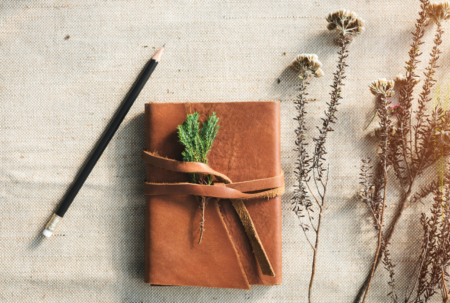
One of my first pieces of advise on nature journaling is getting a good notebook. And I don’t mean anything with pages you can write in, I mean a dedicated notebook that will serve as your nature journal. There are at least two major reasons for this: (1) having a shared notebook with other activities will lead to clutter, and (2) nature walks and other outdoor adventures can be tough on notebooks! It’s better to have a designated place for your thoughts and observations, and not to risk losing other notes by taking them outside with you all the time.
In my experience, the best notebooks are a little durable so that you can throw them in a backpack or carry them around without worrying about them falling apart. This can mean notebooks with tough pages, or with hard covers to protect the paper inside. Waterproof paper is also a major bonus, especially if you’ll be visiting areas where it rains frequently, or where your notebook might fall into water.
It’s also important to make sure that your notebook fits your specific needs. After all, people keep nature journals for lots of different reasons. Do you want to use your journal for drawing pictures? For making repeated observations in one place? For recording the wildflower or pollinator species you come across? Notebooks of different sizes, bindings, and formats will be more appropriate for different uses.

For example, I use a small, spiral-bound flip notebook if I’ll just be recording a quick bird list in the field, or a larger sized hardcover notebook for drawing pictures or keeping notes for the long-term.
Things to consider – notebooks for nature journaling
Here are some things to consider when choosing a notebook for your nature journal:
- Weight – will it be heavy in your pack or difficult to lug around?
- Waterproof or tearproof pages – Will it be easy to keep it in good condition, or will it be better to get something rugged and durable?
- Line vs. grid ruled – Do you like to write on lines, or draw pictures with gridlines? Do you want blank pages?
- Large vs. small notebook – Do you want something that fits in your pocket, or more space for your thoughts and drawings?
Gulo in Nature pick: Rite-in-the-Rain Notebooks
Can’t decide what to choose? I highly recommend waterproof notebooks for outdoor work like Rite-in-the-Rains. I use a “two-notebook” approach, where I have a smaller spiral-bound notebook that comes into the field with me, and a larger one that acts as my real nature journal. That way, you can jot down sketches and snippets in the smaller notebook, and really buckle down and reflect with the other. Here are two that have worked really well for me so far:
Rite in the Rain Hardcover Notebook on Amazon
3-Pack, Rite in the Rain Weatherproof Top Spiral Notebooks
Be sure to label and personalize your nature journal!
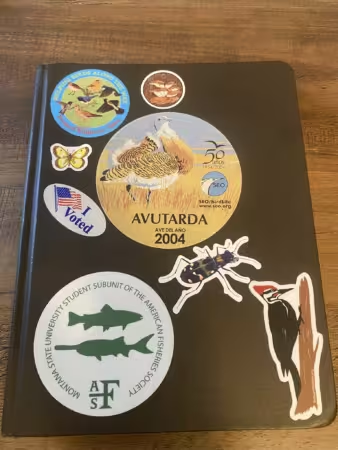
Once you’ve picked out a notebook for your nature journal, be sure to make it yours! I’ve left a notebook behind on more than one occasion, and it’s easy to misplace them out on a hike or adventure. First thing’s first, be sure to label your notebook clearly on the inside cover or first couple of pages. I recommend putting down information like:
- Name
- E-mail or other low-stakes contact information
- Some “Return to…” directions on how people can get your notebook back to you
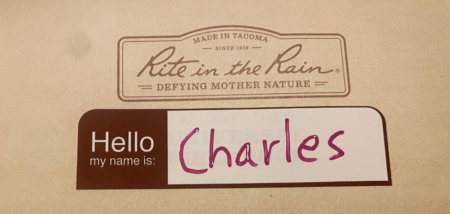
One of my favorite things about starting a new nature notebook is personalizing it with stickers. Hardcover notebooks especially are a great place to showcase your favorite nature-nerd stickers. More artistic friends of mine have used doodled and other distinctive drawings and decorations to set their notebooks apart.
Record dates, times, locations, and weather
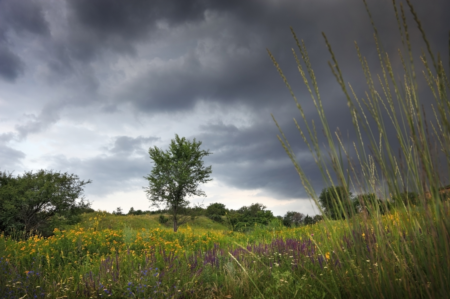
Every time you do a nature journal entry, be sure to record some specifics. This can feel a bit tedious, but it’s an essential part of making your journal a valuable part of your time outdoors. Keeping track of things like when and where you saw a particular plant or animal provides important context to your observations and can help you learn more about what you saw.
10 Wildlife signs to look for in nature
Furthermore, it helps you keep track of different trips for future planning. Did you find a cool mushroom on your last hike in a given place? Knowing exactly when and where you came across it can help you get there again. Timing can be very important in nature, as certain nature happenings and wildlife only occur or show up at very specific times, or very specific conditions.
Phenology: How Timing Works in Nature
Draw pictures
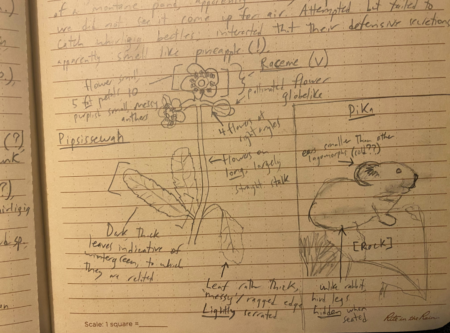
One of the best ways to make us of page space in your nature journal is for drawing what you see. While words and notes can be fantastic, drawing also helps you cultivate a better eye for what you’re seeing. Whether you’re recording field marks on a bird you saw to look it up later, or trying to remember a flower you saw, a picture can be worth a thousand words.
How to identify bird species using field marks
Let me be perfectly honest: I’m a terrible artist. I have never had amazing motor skills, but even someone like me can make a little sketch every now and then. And those sketches can be super useful! For example, friends of mine who are expect botanists have been able to identify winter trees that I described to them because of a doodle I did of some buds on a twig!
Keep lists
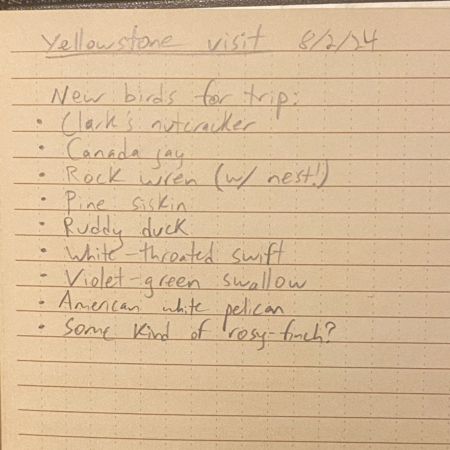
Another easy and quick way to record important info in your nature journal is to keep lists. While my drawings are typically quick little sketches here and there, I keep loads of lists! Some of these are for individual outings or days, like a list of the habitat types that I passed through on a walk on a walk.
How to describe habitats like a naturalist
Others might be for an entire trip. For example, when I teach tropical natural history in Costa Rica, I often keep track of all the bird species spotted throughout the course. It can be really interesting to compare how many species I came across on different trips, or which species showed up in one year and not in another. Of course, birdwatchers are notorious “listers”, who keep lists of bird species in all sorts of locations. Birdwatchers will have lists for individual outings, several-day trips, or even their entire lifetime, their “lifelist”! I recently took up a habit I learned from an old birdwatching friend, keeping a “yardlist” of birds I spotted from my back patio. I keep the list in my nature journal!
8 reasons why you should start birdwatching
Whether you’re keeping lists from individual outings or for your whole life, a nature journal can be a great place to store that information. I recommend keeping longer-term lists at the beginning or end of the notebook for easy access. That way you can revisit them quickly and as often as needed. Meanwhile, I tend to keep my trip- or outing-related lists at the beginning of a nature journal entry.
How to attract songbirds to your backyard
When in doubt, bring it with you
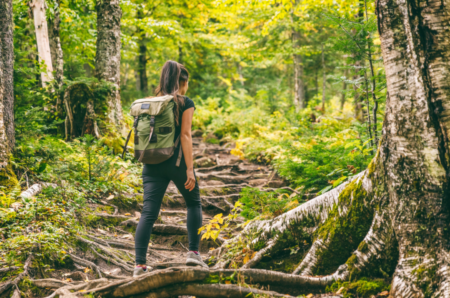
Importantly, if you don’t have a nature journal with you, you won’t be able to use it! If you’re planning an outdoor excursion, be sure to pack your journal just in case. You never know when you might spot something new or exciting, or want to record an observation. Nature journals are also fantastic places to record thoughts and feelings that come up from spending time in nature. After all, time in nature has numerous health benefits, including boosting creativity and new ideas.
7 ways that being outside in nature boosts brain power
One great strategy is to store your nature journal in your outdoor go-bag. That way, you don’t have to remember it, and if you lug your bag along, then the journal will come along too.
Take notes on-location

Nature journaling can be a relaxing and mindful pastime in the comfort of your own home. It can be a way to plan out nature-related travel or reflect on past experiences. Because of this, I highly encourage people to revisit their nature journals even when they’re not outside. However, be sure not to save all of your journaling for after you get home. Important insights, images, and memories can fade quickly when you move on from an experience. As a result, if you see something interesting in the field or have an exciting new thought, you should get in the habit of writing it down as you go.
This isn’t always easy to do if you’re on a hike with distance goals to achieve, or on a trip with lots of other people. Even on those sorts of excursions, you can take advantage of convenient pauses to quickly jot a few things down. Leaving notes, small sketches, or key words, even bullet points on a page can go a long way in helping you more vividly record something a day or two later. If you have the luxury of going at your own pace, I strongly recommend just plopping down with your journal and making more thorough reflections whenever you have the chance. That way, your entries will be truer to what you witnessed in any given moment and truly reflect your experience.
Schedule in breaks for journaling
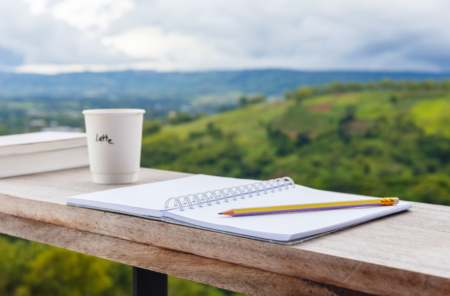
Finding the time for your nature journal while enjoying the outdoors can be challenging. I have often brought my journal along on an outing only to return home and found I never even opened it! This can be frustrating, considering that you’ve carried around that extra weight and not put it to use. Accordingly, planning out specific time during your walk to stop, reflect, and record your observations can be a great strategy.
I typically do my nature journaling when I break for water or a meal. If I’m on a big hike, this might mean stopping at a summit to enjoy the view and write down some of what I have seen. Once again, this doesn’t have to take a long time or involve length entries. Your nature journal is for your use and enjoyment! My own strategy is to stop for quick notes, maybe a sketch or two at least once or twice during an outing. Then, when I’m at home, I can reflect more deeply on the adventure and put my observations in context with something more like a journal entry.
Engage the senses
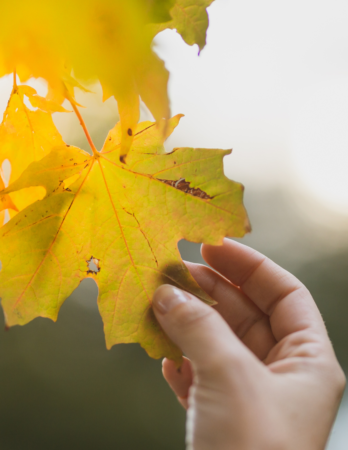
Wondering what to write about in your journal? The natural world has a tendency to reveal itself when you slow down and smell the roses. Sometimes, quite literally! You can find fantastic and new things in the outdoors by following your senses. We humans are unusually visual creatures among the mammals, and tend to rely primarily on our sight. However, many forms of wildlife are difficult to see, from the very small ones to those who live hidden lives, or those who are trying hard not to be seen!
11 Wild Examples of Camouflaged Animals
By listening, smelling, or feeling your surroundings, you may notice things that you might not otherwise have come across. This can lead to exciting discoveries. For example, I once found a sea otter eating an oyster while birdwatching in a park in Alaska. The otter had hidden itself well under a pier, but the sound of its munching cued me in!
Using your different senses will also give you plenty to write about. If you’re describing a pinecone or a flower you came across, don’t just draw a picture. Describe how it smells! Is it prickly? Brittle? Soft? All these details can help you learn new species and get to know the natural world around you.
Get a pencil or waterproof pen

Unfortunately, this advice comes from experience! I once recorded several days of field notes on plain paper in a ball-point pen during a research trip in the Bahamas. On a subsequent trip, I got caught out in a tropical rainstorm, and was soaked to the bone. The result? By the time I got back to my cabin, all of my observations and a couple sketches of insects I had been trying to identify were washed away and useless!
Nature journals are beautiful things for posterity, giving you access to meaningful experiences you’ve had outside. Because of that, you’ll want them to last! Make the investment in a waterproof pen if you prefer ink, or pick up some pencils to take notes with. I prefer mechanical pencils since they keep a finer point without sharpening, which makes sketching easier. Furthermore, I can write with small letters where I need to and save space. By using these types of implements, especially with tough, water-resistant paper, you can ensure your hard-earned journal entries last to be enjoyed later.
Try a sit-spot

Having trouble getting started with your nature journal? The first thing I typically recommend to fellow naturalists is a sit-spot. Sit-spots are a great way to get in the habit of nature journaling, since they emphasize not moving around.
Many nature lovers also emphasize repeatedly visiting the same location for sit-spots. This can also be an excellent habit for nature journaling. This is because time in the same place helps you notice changes over time, giving a more nuanced perspective on the nature of a place. Were those wild onion shoots there last time you visited the spot? Was there a vernal pool in that little depression that is dried up now? Sit-spots can be a way to increase your mindfulness and get new insights from a place that you wouldn’t otherwise.
The deliberate, stationary nature of sit-spots also lends itself well to sitting, writing, and drawing. In other words, it’s perfect for getting your nature journal going! In my experience, drawing requires careful study of an object, and the ability to discern the key shapes and textures. Sit spots make this easy, since you’ll be able to view things from a given angle for a long time. Furthermore, more active wildlife may get used to your presence and be easier to view for watching and drawing.
12 Tips for doing a great sit-spot
Check out other nature journals for inspiration
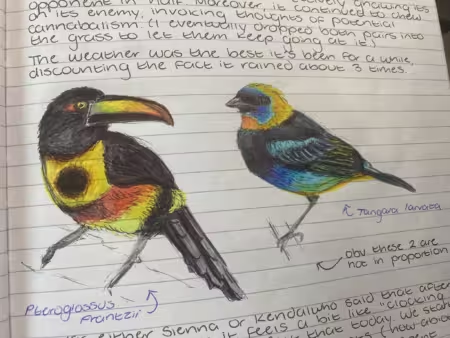
Looking for some inspiration to get your nature journal started? Fortunately, natural journaling has a long and rich history, and many talented naturalists and scientists have left incredible journals behind. Many of these have now been published as books, which are an exciting way to look at nature through someone else’s eyes.
It’s also worth reaching out to friends and other fellow naturalists to see if they might be willing to share some of their journal entries. Of course, sometimes these can be very personal, but for many people they are a source of pride. I’ve always been excited to show even my mediocre sketches to friends and students when we discuss the topic of nature journals. Looking through other naturalists’ journals can be hugely inspiring and give you ideas for your own formats and styles of journal entry.
Flip through your journal often
Even if you typically leave your nature journal in your backpack of naturalist go-bag, make sure you take it out once in a while! It’s important—and fun!—to read through your old journal entries. It’s a great way to see how your learning has changed or improved how you notice and enjoy the natural world. Furthermore, you can use it as a reference for when you spotted certain species or goings-on in previous years. I often use mine to remember the names of campsites or hiking trails that I visited when making recommendations to friends. To that end, experiences that I have recorded in my nature journal make frequent contributions to this blog!
Check out books and online courses on nature journaling
As more and more people turn to outdoor time and nature enjoyment for their vacation travel and leisure time, nature study is making a major comeback. Nature journaling is a big part of that! With so many new people getting excited about nature, it’s no wonder that online resources for keeping nature journals are becoming more common. If you’re looking to start a nature journal or just level up your current journaling, be sure to browse the web for examples and inspiration as well.
For example, John Muir Laws is one of the big names in nature journaling, with years of experience and fantastic tips. You can get PDF copy of his instructional book on teaching nature journaling, with great tips for beginners, from his website.
Keep up the habit!
Like any other skill or hobby, nature journaling takes time to learn and repeated practice to improve. The enjoyment you may get out of it will get greater over time, as you have more and more entries to peruse and compare, and more adventures to share with others. As you learn more about the natural world, your observations will become more and more interesting and your discoveries more exciting.
Once you’ve started, try and stick with it! This can be challenging with other demands from our professional or personal lives. But setting aside time to practice these sorts of mindfulness activities repeatedly can be extremely rewarding. All it takes is some consistency.
Thanks for reading Gulo in Nature’s tips on keeping a nature journal!
Do you have a favorite nature journal entry that you’d like to share? Tell us about it in the comments! if you enjoyed this post and would like to support the blog, follow us on Social Media and share Gulo in Nature with your connections. If you have nature questions or topics you’d like advice on, reach out using the Contact Page. Until next time, get to know your natural world!

